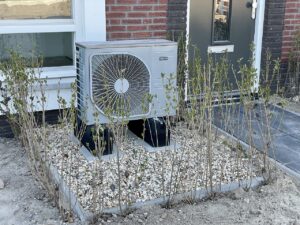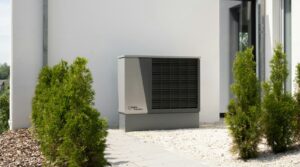In recent years, Texas has seen a growing interest in the use of heat pumps, a technology known for its energy efficiency and environmental benefits. This surge is partly influenced by changing climate patterns and a broader push towards sustainable living. As Texas residents seek more energy-efficient and cost-effective alternatives to traditional heating and cooling systems, heat pumps emerge as a compelling solution. Moreover, learning from models like Denmark’s subsidy approach offers valuable insights into fostering this transition.
Heat Pumps in Texas: A Sustainable Alternative
 Heat pumps work by transferring heat from outside to inside a home (or vice versa), providing both heating and cooling options. This versatility makes them particularly suitable for Texas’s varied climate, which can fluctuate from hot summers to chilly winters. The efficiency of heat pumps comes from their use of electricity to move heat rather than generate it, making them more energy-efficient and environmentally friendly compared to conventional HVAC systems.
Heat pumps work by transferring heat from outside to inside a home (or vice versa), providing both heating and cooling options. This versatility makes them particularly suitable for Texas’s varied climate, which can fluctuate from hot summers to chilly winters. The efficiency of heat pumps comes from their use of electricity to move heat rather than generate it, making them more energy-efficient and environmentally friendly compared to conventional HVAC systems.
Texas: Policies and Subsidies for Heat Pumps
In Texas, there is a growing recognition of the benefits of heat pumps. However, the state’s approach to subsidies and incentives for adopting this technology is still evolving. As of my last update, specific statewide subsidies exclusively for heat pumps were not prominent. However, homeowners in Texas can benefit from various federal tax credits and local utility rebates that encourage the adoption of energy-efficient appliances, including heat pumps.
These incentives often include:
- Federal Tax Credits: Homeowners may be eligible for tax credits for installing energy-efficient systems.
- Utility Rebates: Many local utility companies in Texas offer rebates for the installation of energy-efficient appliances, including heat pumps.
Homeowners are advised to consult local utility providers and energy efficiency program websites for the most current information on available incentives.
Lessons from Denmark: A Model for Subsidizing Heat Pumps
Denmark’s approach to heat pump subsidies offers an interesting case study. The country, known for its commitment to sustainability and renewable energy, has implemented various initiatives to encourage the adoption of heat pumps. These subsidies are part of a broader strategy to reduce carbon emissions and transition away from fossil fuels. Varmepumpepuljen
In Denmark, homeowners can avail themselves of significant subsidies for installing heat pumps. The subsidies are part of a national scheme aimed at reducing the environmental impact of home heating. They cover a portion of the installation costs, making heat pumps a more financially viable option for many. This approach has been instrumental in accelerating the adoption of renewable energy technologies across Danish homes.
“Varmepumpepuljen” is a subsidy scheme in Denmark specifically designed to encourage the installation of heat pumps in private homes. This program is a part of Denmark’s broader strategy to increase energy efficiency and reduce carbon emissions from household heating systems. The concept of “varmepumpepuljen” can be broken down as follows:
- Purpose: The primary goal of the Varmepumpepuljen is to support the transition from older, less efficient heating systems, such as oil or gas boilers, to more sustainable and environmentally friendly heat pump systems. This shift is in line with Denmark’s ambitious climate targets and efforts to promote renewable energy sources.
- Subsidies: The scheme provides financial assistance to homeowners who choose to install heat pumps. These subsidies are designed to offset a portion of the installation costs, making the transition to heat pumps more economically feasible for a broader range of homeowners. The exact amount of the subsidy can vary based on several factors, including the type of heat pump installed and the specific circumstances of the homeowner.
- Eligibility: To be eligible for the subsidy, homeowners typically need to meet certain criteria. This could include, for example, replacing an existing oil or gas boiler with a heat pump, ensuring that the heat pump meets specific energy efficiency standards, and having the installation performed by a certified professional.
- Benefits: Apart from the direct financial incentive, the Varmepumpepuljen offers several long-term benefits. Heat pumps are more energy-efficient and have lower operational costs compared to traditional heating systems. They also reduce the reliance on fossil fuels and decrease greenhouse gas emissions, contributing to a cleaner, more sustainable environment.
- Implementation: The Danish government, through relevant energy agencies or departments, typically administers the Varmepumpepuljen. The implementation may involve an application process where homeowners apply for the subsidy, providing details about their existing heating system and the proposed heat pump installation.
- Impact: Programs like the Varmepumpepuljen have the potential to significantly impact national energy consumption patterns and carbon footprints. By incentivizing the adoption of heat pumps, Denmark not only advances its climate goals but also paves the way for innovations in sustainable home heating technologies.
In summary, Varmepumpepuljen is a key element of Denmark’s environmental policy, reflecting the country’s commitment to reducing emissions and promoting renewable energy sources in residential heating. It serves as a model for other countries looking to encourage the adoption of more sustainable energy technologies.
The Future of Heat Pumps in Texas and Beyond
The example set by Denmark highlights the potential impact of well-designed subsidy programs in promoting sustainable technologies. As Texas continues to grapple with energy challenges and climate change, the lessons from Denmark could inform future policies and subsidy models in the state.
For Texas, the increasing adoption of heat pumps represents not only a step towards energy efficiency but also an alignment with broader environmental goals. While the state’s current subsidy landscape for heat pumps is relatively nascent, there is potential for growth, especially when looking at successful international models.
In conclusion, as more Texans turn to heat pumps for their heating and cooling needs, the state has the opportunity to develop more robust support mechanisms, inspired by global best practices. Such initiatives could significantly contribute to Texas’s sustainable future, reducing energy consumption and greenhouse gas emissions, while also providing economic benefits to homeowners.
